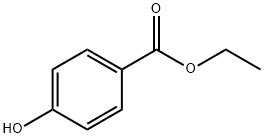2-Chloroethyl ethyl sulfide
- CAS NO.:693-07-2
- Empirical Formula: C4H9ClS
- Molecular Weight: 124.63
- MDL number: MFCD00000979
- EINECS: 211-742-1
- SAFETY DATA SHEET (SDS)
- Update Date: 2024-12-18 14:08:52

What is 2-Chloroethyl ethyl sulfide?
Chemical properties
clear colourless to light yellow liquid
The Uses of 2-Chloroethyl ethyl sulfide
2-Chloroethyl Ethyl Sulfide is used as a reagent in the synthesis of furfuryl xanthines as adenosine receptor antagonists. It is also used as a reagent in the synthesis of methoxypropyl xanthines as putative A2B receptor antagonists.
General Description
2-Chloroethyl ethyl sulfide is a monofunctional analog of sulfur mustard (SM; 2,2′-dichloro diethyl sulfide). The mass diffusivity of 2-chloroethyl ethyl sulfide, a chemical warfare agent simulant, was studied.
Safety Profile
Poison by ingestion and subcutaneous routes. Mutation data reported. A severe skin and eye irritant. See also ETHERS and SULFIDES. When heated to decomposition it emits very toxic fumes of Cland SOx.
Properties of 2-Chloroethyl ethyl sulfide
| Boiling point: | 156-157 °C (lit.) |
| Density | 1.07 g/mL at 25 °C (lit.) |
| refractive index | 1.4875-1.4895 |
| Flash point: | 52 °C |
| storage temp. | 2-8°C |
| solubility | Chloroform (Sparingly), Methanol (Slightly) |
| form | Liquid |
| Specific Gravity | 1.07 |
| color | Clear colorless to light yellow |
| Water Solubility | Insoluble |
| CAS DataBase Reference | 693-07-2(CAS DataBase Reference) |
| NIST Chemistry Reference | 2-Chloroethyl ethyl sulfide(693-07-2) |
| EPA Substance Registry System | Ethane, 1-chloro-2-(ethylthio)- (693-07-2) |
Safety information for 2-Chloroethyl ethyl sulfide
| Signal word | Danger |
| Pictogram(s) |
 Flame Flammables GHS02  Corrosion Corrosives GHS05  Skull and Crossbones Acute Toxicity GHS06  Health Hazard GHS08 |
| GHS Hazard Statements |
H226:Flammable liquids H314:Skin corrosion/irritation H350:Carcinogenicity |
| Precautionary Statement Codes |
P201:Obtain special instructions before use. P210:Keep away from heat/sparks/open flames/hot surfaces. — No smoking. P280:Wear protective gloves/protective clothing/eye protection/face protection. P303+P361+P353:IF ON SKIN (or hair): Remove/Take off Immediately all contaminated clothing. Rinse SKIN with water/shower. P305+P351+P338:IF IN EYES: Rinse cautiously with water for several minutes. Remove contact lenses, if present and easy to do. Continuerinsing. |
Computed Descriptors for 2-Chloroethyl ethyl sulfide
| InChIKey | GBNVXYXIRHSYEG-UHFFFAOYSA-N |
New Products
(S)-3-Aminobutanenitrile hydrochloride 4-Methylphenylacetic acid N-Boc-D-alaninol N-BOC-D/L-ALANINOL Tert-butyl bis(2-chloroethyl)carbamate 3-Morpholino-1-(4-nitrophenyl)-5,6-dihydropyridin- 2(1H)-one Furan-2,5-Dicarboxylic Acid Tropic acid 1-Bromo-3,5-Di-Tert-Butylbenzene S-2-CHLORO PROPIONIC ACID ETHYL ISOCYANOACETATE 2-Bromo-1,3-Bis(Dimethylamino)Trimethinium Hexafluorophosphate 4-IODO BENZOIC ACID 3-NITRO-2-METHYL ANILINE 1-(2,4-DICHLOROPHENYL) ETHANAMINE (2-Hydroxyphenyl)acetonitrile 4-Bromopyrazole 2-(Cyanocyclohexyl)acetic acid 4-methoxy-3,5-dinitropyridine 1-(4-(aminomethyl)benzyl)urea hydrochloride 2-aminopropyl benzoate hydrochloride diethyl 2-(2-((tertbutoxycarbonyl)amino) ethyl)malonate tert-butyl 4- (ureidomethyl)benzylcarbamate Ethyl-2-chloro((4-methoxyphenyl)hydrazono)acetateRelated products of tetrahydrofuran








You may like
-
 2-Chloroethyl ethyl sulphide, 97% CAS 693-07-2View Details
2-Chloroethyl ethyl sulphide, 97% CAS 693-07-2View Details
693-07-2 -
 2-Chloroethyl Ethyl Sulfide CAS 693-07-2View Details
2-Chloroethyl Ethyl Sulfide CAS 693-07-2View Details
693-07-2 -
 2-Chloroethyl ethyl sulfide CAS 693-07-2View Details
2-Chloroethyl ethyl sulfide CAS 693-07-2View Details
693-07-2 -
 1975-50-4 98%View Details
1975-50-4 98%View Details
1975-50-4 -
 2-HYDROXY BENZYL ALCOHOL 98%View Details
2-HYDROXY BENZYL ALCOHOL 98%View Details
90-01-7 -
 2-Chloro-1,3-Bis(Dimethylamino)Trimethinium Hexafluorophosphate 221615-75-4 98%View Details
2-Chloro-1,3-Bis(Dimethylamino)Trimethinium Hexafluorophosphate 221615-75-4 98%View Details
221615-75-4 -
 14714-50-2 (2-Hydroxyphenyl)acetonitrile 98+View Details
14714-50-2 (2-Hydroxyphenyl)acetonitrile 98+View Details
14714-50-2 -
 118753-70-1 98+View Details
118753-70-1 98+View Details
118753-70-1
Statement: All products displayed on this website are only used for non medical purposes such as industrial applications or scientific research, and cannot be used for clinical diagnosis or treatment of humans or animals. They are not medicinal or edible.